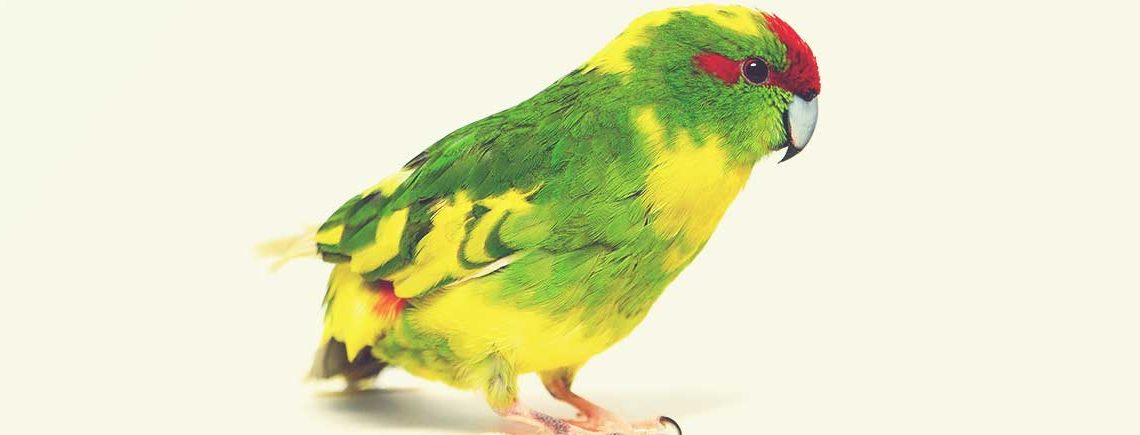Popular Pet Birds – Kakariki
Choosing a Pet Bird: A little bit about Kakariki
Birds can make wonderful pets, but there are many different types of birds, so how do you choose the one that is right for your family? Like any pet, birds will require lots of love and care to help keep them healthy and well, so in this blog we are taking a look at Kakariki, and what you can expect if you were to have a one as a pet.
Kakariki are small green coloured slender birds with a long tail. They originate from several islands in the Pacific Ocean. There have been five species of Kakariki recorded; but two became extinct by the mid 19th century. Commonly kept Kakariki are the red-fronted and yellow-fronted birds that come from New Zealand. They breed well in captivity. The red-fronted are slightly bigger than the yellow-fronted and males are bigger than females.
How Long Do Kakariki Live?
The average lifespan for Kakariki is 15 years.
Company for Kakariki
Although they are a very active bird they can also be peaceful birds that can be kept together in the same breed. However, it is recommended that you pair a male and a female together. Kakariki’s breed best when kept one pair per cage. They are similar to budgies but bigger; and they are very animated, playful and chatty birds, but do not like being handled too much.
Where Kakariki Like to Live?
The ideal cage for a Kakariki is a stainless steel cage with the dimensions 85cm x 55cm x 90cm. If the cage is too small this does not allow the Kakariki to spread its wings. At 5 months old they become adolescent. As a result, they become more adventurous and independent needing a bigger cage, unless you chose a larger one from at the start. Too small a cage could make them irritable and aggressive.
Perches should be made available in the cage, along with ropes, and some toys like bells, balls, swings, ladders, and perches. These perches will help keep the Kakariki’s nails short. Suitable bedding for a Kakariki is sand paper or wood shavings.

Exercise & Play
A Kakariki should be let out to fly a couple of times a day; allowing them to spread their wings and get their exercise. These birds enjoy flying around a staircase as this gives them height to fly up and down. For a happy Kakariki give them up to 3 hours flying time a day. Please make sure your house is bird proof before letting them out, for example, your doors and windows are shut. Although, unlike budgies they do not like to be handled, but it is recommended that you give them some human interaction. Like all birds building a relationship with them is important, try holding something interesting to encourage them to come over and land on it.
Diet & Nutrition
Kakariki love to eat; they eat both seed and vegetable food. They are very easy to feed, they dimply eat just about anything. A varied diet should be offered, though we suggest a Lovebird mix, Cockatiel or Small Parrot seed mixes, fruit and vegetables.
You can feed them wet food like vegetables, sprouted seeds, beans, fruits, cooked beans and grains. They drag them onto higher perches to eat, but they can drop lots of food outside the cage on the way. It is necessary to clean around the cage frequently, otherwise old food might cause infection to inquisitive Kakariki.
Kakariki pose no problem when feeding as long as there is plenty of it and a good variety. A cuttlebone or a mineral block should be used to help maintain the Kakariki’s beak; this is a good source of calcium along with a millet spray when you want to give them a treat. Fresh food and water must be made available on a daily basis.
Health & Hygiene
Your Kakariki’s cage will require a weekly clean using a bird safe disinfectant, with perches, ropes been cleaned twice a week. Food and water bowls should be cleaned on a daily basis.
Kakarikis love to bathe, this helps maintain their coat. When giving them a water bath be careful not to fill it up too high. The right amount is no more than half way. Instead of a water bath you can use mist spray on the bird every day.
A perch will normally take care of the Kakariki nails, but if they become over-grown they will need to be trimmed. We recommend visiting your vet for this.
Sexing
There are pros and cons in both sexes when you choose one as a companion bird. Males can talk clearly and they are probably more human oriented, but they can bite harder. Females look cuter and can’t bite hard enough to hurt humans. Females also tend to be more playful and aerobatic owing to lighter body weight. But they may become continuous egg layers who don’t show much interest in other activities, once they become hormonal. They also need to chew a lot.
Take Me Home Checklist
When to take your Kakariki home, you will need make sure you have some things in order to help keep them healthy and happy. We’ve put together a simple ‘Take Me Home’ checklist for new Kakariki keepers. If you have any questions, or need any further advise, please drop in to your local Petmania and talk to our Petcare advisors.
- Wire cage (60cm x 40cm x 60cm for one Cockatiel, 100cm x 70cm x 130cm for two Kakariki’s)
- Food – Kakariki or Cockatiel mix not parrot mix
- Bedding – sand sheets or beech chippings
- Water & food dishes
- Toys, like ladders, perches, & swings
- Cuttlebone & holder
- Bird safe disinfectant
- Treats like millet spray & holder, honey bells & seed bars

